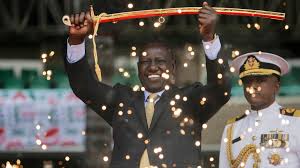Impeachment is often seen as the most common way to remove a Kenyan president from office if found guilty of violating the law.
However, the Constitution of Kenya 2010 provides other methods, including removal due to incapacity.
Whether through impeachment or incapacitation, the process of removing a president begins in the National Assembly and concludes in the Senate.
The Constitution outlines two specific methods of removal: impeachment and incapacity, which are detailed in Articles 144 and 145.
Although Kenya has not experienced this since independence, opposition leader Raila Odinga and other leaders from the Azimio coalition attempted to oust President William Ruto in July 2023.
Instead of following the constitutional procedures outlined in Articles 144 and 145, they opted to gather 10 million signatures from Kenyans in an effort to undermine the president’s legitimacy.
Steps for Removing a President from Office
Regardless of the reason for removal—whether through impeachment or on the grounds of incapacity—the process always starts in the National Assembly and concludes in the Senate.
Additionally, the president can leave office after serving two five-year terms, as provided in Article 142 of the Constitution.
Removal on Grounds of Incapacity
Article 144 of the Constitution provides the steps for removing the president due to incapacity. If a president is believed to be physically or mentally unfit to perform the duties of office, a member of the National Assembly, supported by at least a quarter of all members, can propose a motion to investigate the president’s capability.
If the majority of National Assembly members support the motion, the Speaker must notify the Chief Justice within two days. The president will continue to carry out duties during the investigation.
Within seven days of receiving the Speaker’s notice, the Chief Justice is required to form a tribunal. This tribunal should consist of:
(a) Three medical professionals licensed to practice in Kenya, nominated by the appropriate regulatory body; (b) One advocate of the High Court, nominated by the relevant professional body; and (c) One person nominated by the president.
If the Chief Justice cannot form the tribunal, the Deputy Chief Justice is responsible for doing so. If the president cannot nominate a person for the tribunal, a family member or close relative may step in to make the nomination.
The tribunal must investigate the matter and report its findings to the Chief Justice and the Speaker of the National Assembly within 14 days.
The report is then presented to the National Assembly within seven days. The tribunal’s decision is final and cannot be appealed. If the tribunal concludes that the president is fit to continue in office, the Speaker will announce this in the National Assembly.
However, if the tribunal determines that the president is unfit, the National Assembly will vote on whether to ratify the report.
If the majority of the members vote in favor of ratifying the report, the president will be removed from office.
Removal by Impeachment
The impeachment process begins in the National Assembly and requires the support of at least one-third of the members (117 out of 349 MPs). The grounds for impeachment, as outlined in Article 145, are:
(a) Gross violation of the Constitution or any other law; (b) Strong reasons to believe that the president has committed a crime under national or international law; (c) Gross misconduct.
If the impeachment motion is supported by at least two-thirds of the National Assembly, the Speaker must notify the Speaker of the Senate within two days.
The president continues to serve during this process. Within seven days, the Senate Speaker must convene a session to hear the charges.
The Senate may choose to appoint a special committee of 11 members to investigate the charges.
The president has the right to appear and be represented during the committee’s investigation. If the committee finds the charges unsubstantiated, the process ends, and no further action is taken.
However, if the committee determines that the charges are valid, the Senate will vote on the impeachment charges.
If at least two-thirds of the Senate votes to uphold any of the charges, the president will be removed from office.
Article 142: President’s Term Limits
Article 142 of the Constitution states that the president holds office from the time of being sworn in until the next elected president takes over.
It also limits a person to serving no more than two five-year terms as president.
Rigathi Gachagua’s Impeachment
In an unprecedented move, Kenya’s National Assembly impeached Deputy President Rigathi Gachagua on Tuesday, October 8, 2024, under Article 150 of the Constitution.
Gachagua became the first deputy president or vice president in Kenya’s history to face impeachment.
The motion, presented by Kibwezi West MP Mwengi Mutuse, received support from 281 MPs, while only 44 voted against it, and one abstained. Mutuse cited 11 reasons for Gachagua’s impeachment,
persuading the majority of the National Assembly to back the motion.
Gachagua will now face trial in the Senate, where he will defend himself against the charges. If the Senate upholds the impeachment, he will be removed from office.
His final recourse would be to challenge the decision in court.


